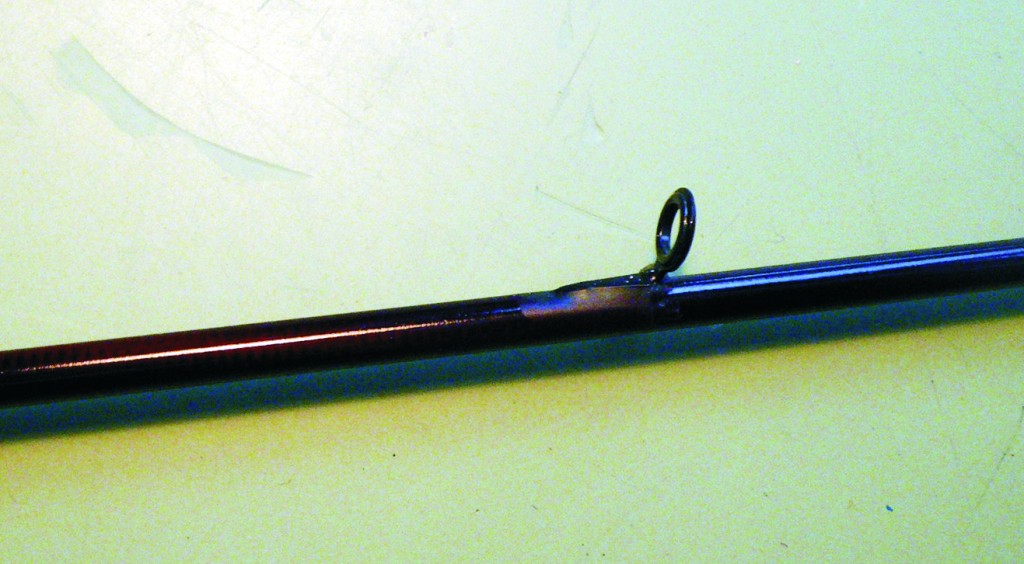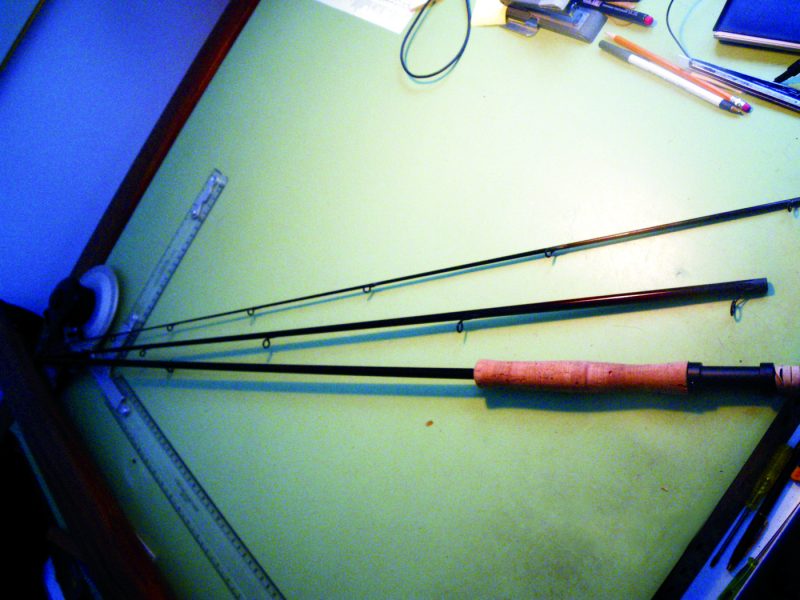
By Tim Veale
Above: A graphite composite fly rod with all of the guides attached with G/flex to maximize the rod’s flexibility.
Fly fishing, particularly for Atlantic Salmon, has been my lifelong hobby. The fly rod itself has an ancient past but its technical prowess as an instrument to launch line and fly to a designated spot on the river was epitomized by the arrival of handcrafted split bamboo rods in the late nineteenth century.
But bamboo, notwithstanding its nostalgic appeal, cannot compete with a fly rod made from the carbon and nano-fibers available today. Carbon composite rods have reached new heights in flexibility. Their ability to deliver line and fly over long distances is reflected in the ‘modulus,’ or stiffness, rating borrowed from aerospace and mechanical engineering’s modulus of elasticity. The higher the rating, the more energy is stored in the rod, and by extension, the farther it will cast a line.
It occurred to me that a new carbon fiber rod could only deliver its claimed ‘modulus’ when it was unencumbered by line guides, which are typically spaced every few inches down the length of the rod. Such guides are typically double-footed and bound to the rod with tightly wrapped nylon thread. I asked myself “What happens to a rod’s highly touted modulus when it is hobbled every few inches by a rigidly wrapped line guide? Does installing line guides destroy the rod’s original modulus ratings?”
As a subscriber to Epoxyworks, I have been intrigued by the new G/flex flexible epoxy and decided to try it as a means of attaching the line guides to a carbon fiber fly rod. The G/flex would need to be tenacious enough to keep the guide in place under stress, and flexible enough to allow the rod’s natural stiffness to work as intended.

Here is the procedure to construct a finished fly rod using G/flex to attach the guides:
- Mark the location of each guide and scuff an area of the rod’s surface, exposing native carbon fiber (not too much—just enough to create a pad for the guide foot, plus 10%).
- Remove any paint from the top and bottom of the guide foot with 5 32” chainsaw file and 80-grit sandpaper.
- Slide a half-inch-long piece of heat shrink tubing (sized correctly for diameter at guide location) onto the rod blank and leave it loose on the foot side where the glue joint will be.
- Thoroughly mix a small amount of G/flex and spread it on the underside of the guide foot and on the scuffed pad area of the rod. Place the guide and slide the tubing up over the foot. Heat to shrink the tubing. Gently re-position the guide under the tubing if necessary.
- Leave in 65°–70°F area, undisturbed for 7–8 hours then remove heat shrink tubing by peeling with a sharp thumbnail. 6. Inspect, gently remove any excess glue and leave to cure another 16 hours.
Done properly with well-prepared parts, these guides will not only stay on the rod as predicted but the overall modulus rating of the carbon fiber rod blank will not be encumbered by the usual eight or nine lashed-down guides festooning an ordinary fly rod.





